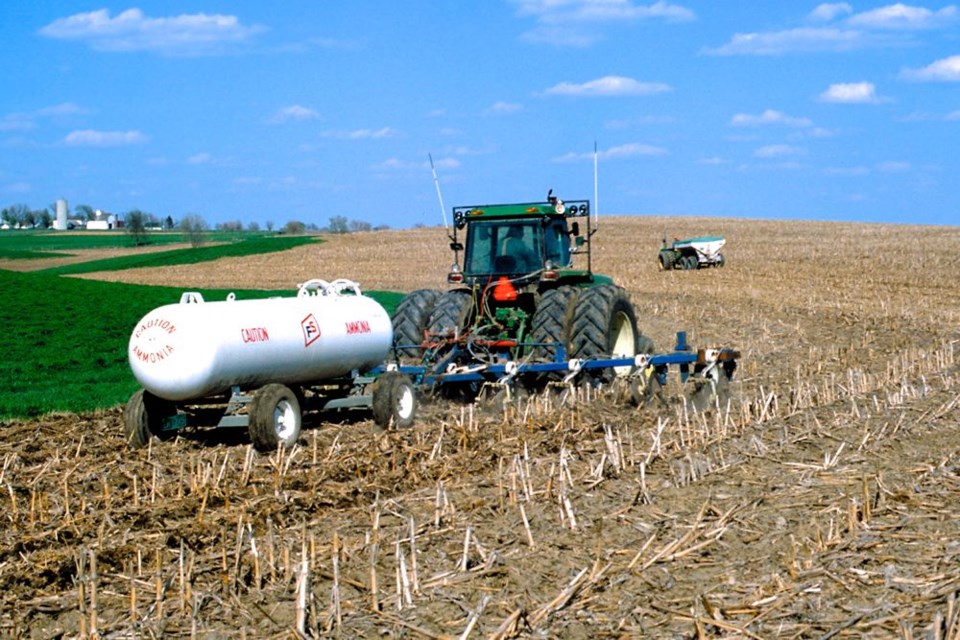Fertilizer Canada and the Canadian Association of Agri-Retailers (CAAR) say there will be enough anhydrous ammonia nurse tanks available to supply the fertilizer to farmers during this growing season.
New Transport Canada regulations came into force Jan. 12, which affect the frequency of hydrostatic testing and visual inspection of ammonia nurse and applicator tanks and field delivery units.
The concern is whether enough of the tanks can be recertified in time for the growing season, although CAAR says that many agri-retailers have already done the testing to bring nurse tanks into compliance for spring planting.
Why it matters: Anhydrous ammonia is a popular nitrogen fertilizer source for crops grown across Canada. Any delay in access to anhydrous ammonia would have a significant effect on being able to get crops planted or seeded.
“CAAR and Fert Canada both have working committees, and we are also communicating and continue to work with Transport Canada to find what is the right solution to limit inconvenience to farmers from these changes,” said Mitch Rezansoff, executive director of CAAR.
“The discussions are going well, but not as fast as everyone would like,” he said. A change in nitrogen source away from anhydrous ammonia to granular or liquid fertilizer would be impossible for many farmers, as the inventory is not there at the retailer level and neither are the equipment or logistics to manage such a significant change in the type of nitrogen fertilizer used across the country.
Transport Canada confirmed to Farmtario on Monday that no decision has been made on mitigating the regulatory changes on anhydrous ammonia tanks.
The regulations have been in development since 2014, were finalized in the summer of 2017 and came into effect Jan. 12, 2018. The regulatory changes are part of a larger review of regulations of compressed gas storage tanks.
Here’s what the regulations mean to farmers and retailers:
- The previous standard was pressure testing every five years
- Tanks that were heat treated after welding can continue to be tested every five years
- Tanks that were not heat treated after welding now have to be tested every three years, which is causing the most consternation. Retailers that had the tanks tested in 2013 or 2014 will now have to retest those tanks. However, some of them are already filled and needed for use soon
- CAAR and Fertilizer Canada are trying to get Transport Canada to suspend the need for testing of those non-heat-treated tanks until after this year’s fertilizer application. That will mean more work this summer, but would not affect the fertilizing of this year’s crop
- Tanks now also have to be visually inspected yearly by a certified inspector, often an employee of a retailer
Transport Canada is now looking at potential changes to how compressed gas container are constructed. Rezansoff said CAAR and manufacturers are part of that process.
— John Greig is the editor of Farmtario at Ailsa Craig, Ont. Follow him at @jgreig on Twitter.




